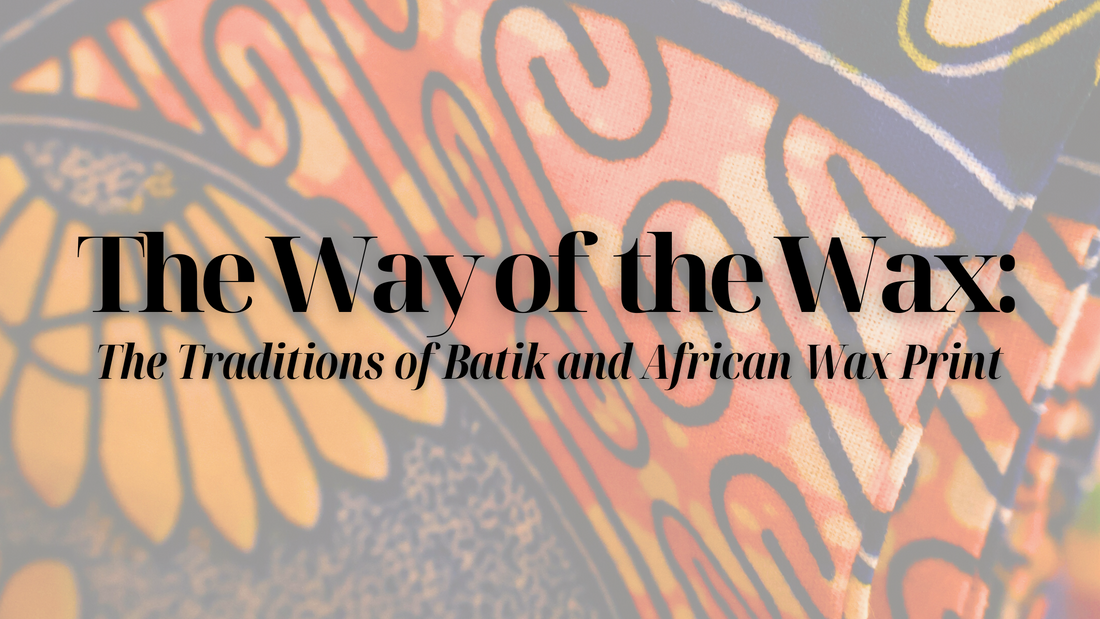
The Way of the Wax: The Traditions of Batik and African Wax Print
If you place a star sticker on a piece of white paper, color over the whole page with red marker, and then remove the sticker, you will have a red page with a white star on it.
People experiment with this type of phenomenon all the time, like placing a heart-shaped sticker on their arm before getting a tan or even when putting down painters tape in a striped pattern on a wall before painting. In every example, you’re left with a unique resist dye pattern.
This week, we’re discussing two types of textile design that use the resist dye process: batik and African wax print.
Let’s jump in!

A Brief History
Batik is the ancient traditional practice of dripping or stamping hot wax onto fabric, dyeing the fabric, and then removing the wax. This specific form of resist dyeing, known as batik, originated in Indonesia.
To summarize a deep history, after Dutch merchants encountered the practice in Indonesia, they later carried it with them from Asia to West Africa, where, through colonial trade networks, it morphed into African Wax Print or Ankara.
While their histories are intertwined, the two forms of resist dyeing have come a long way from their origins, and each has unique characteristics. While the ikat we talked about last week is a form of resist dye tradition as well, Batik and African Wax Print are different, as the fabric is made before the pattern is applied.
These forms are intricate, rich with history and tradition, and take many steps to complete. Let’s look at how you might recognize these processes on clothing when you shop.
The Look and Feel
Batik is often recognizable through simpler colorways and more minimal, but unique patterns. Oftentimes, you can see the small cracks in the patterns that form naturally when the wax cracks during production.
At Latitudes Fair Trade, a few examples of Batik include this Orange Mocktail Apron, the Retro Dress from Ghana, and even our bone chopsticks from Kenya.

African wax prints, on the other hand, are known for being incredibly vibrant, typically using multiple colors and patterns in a single piece. These pieces often have a crisper look and fewer cracks in the patterns.
In-store at Latitudes Staunton, you’ll find these stunning children's dresses featuring African wax print.

Textile Traditions
Both Batik and African wax print are evolving practices that maintain tradition while welcoming the new styles of today. When you choose to wear these textiles, you continue a long history of art, tradition, and fashion.
If you loved this read, join us next week as we delve into the art of embroidery for our final post in this series.
Share this blog with someone who loves printed fabrics and don't forget to subscribe to the newsletter!
